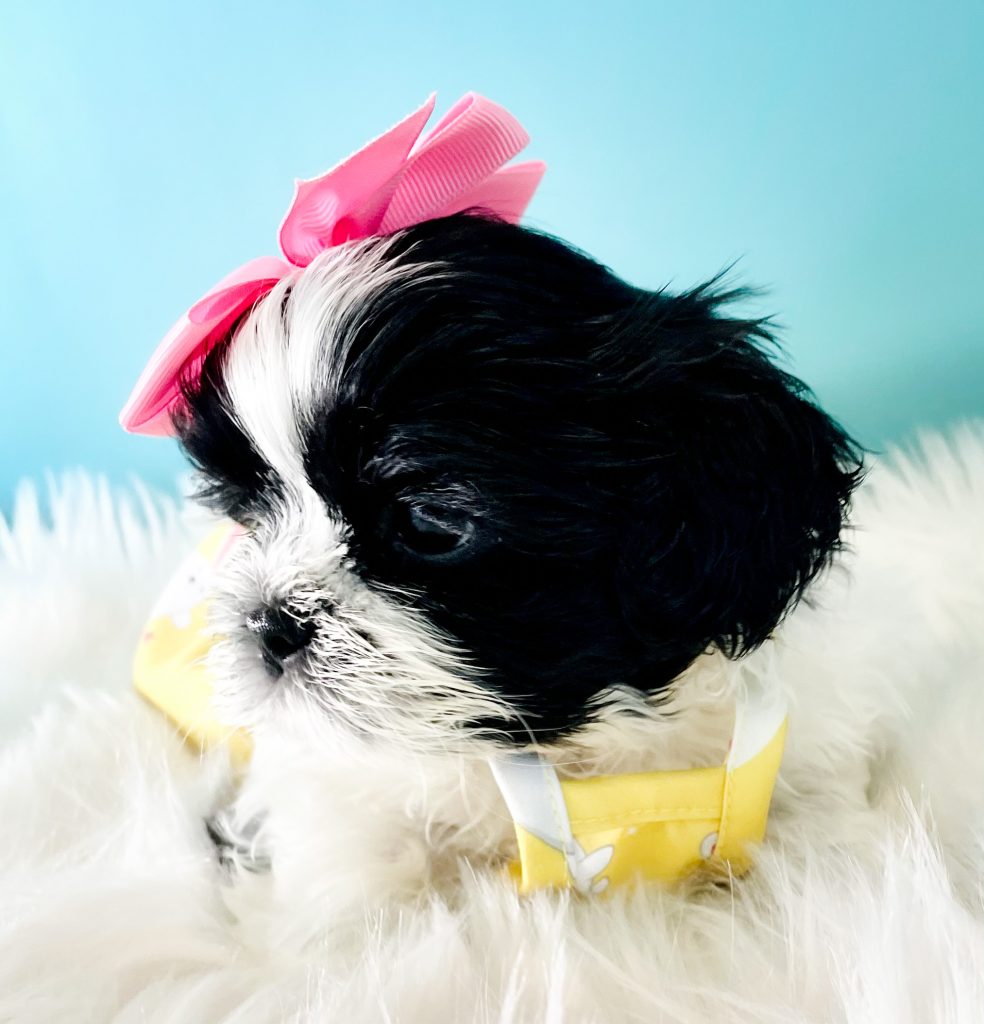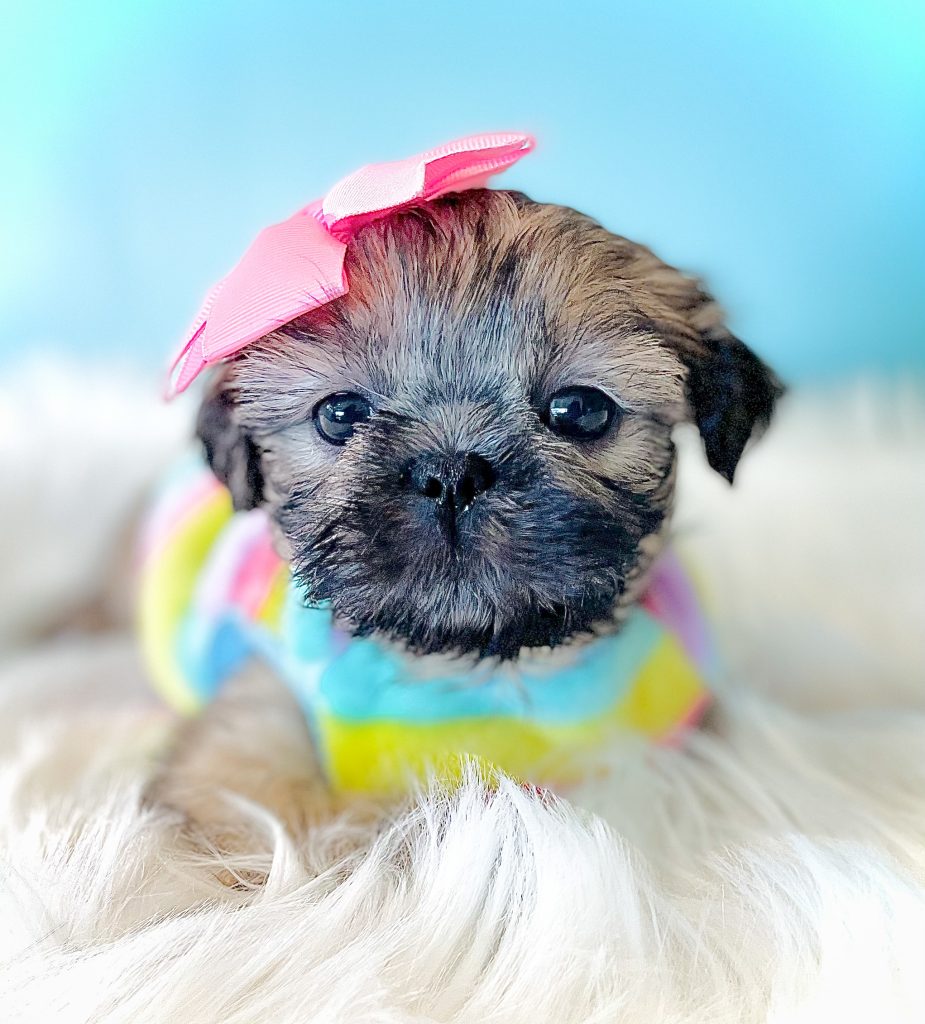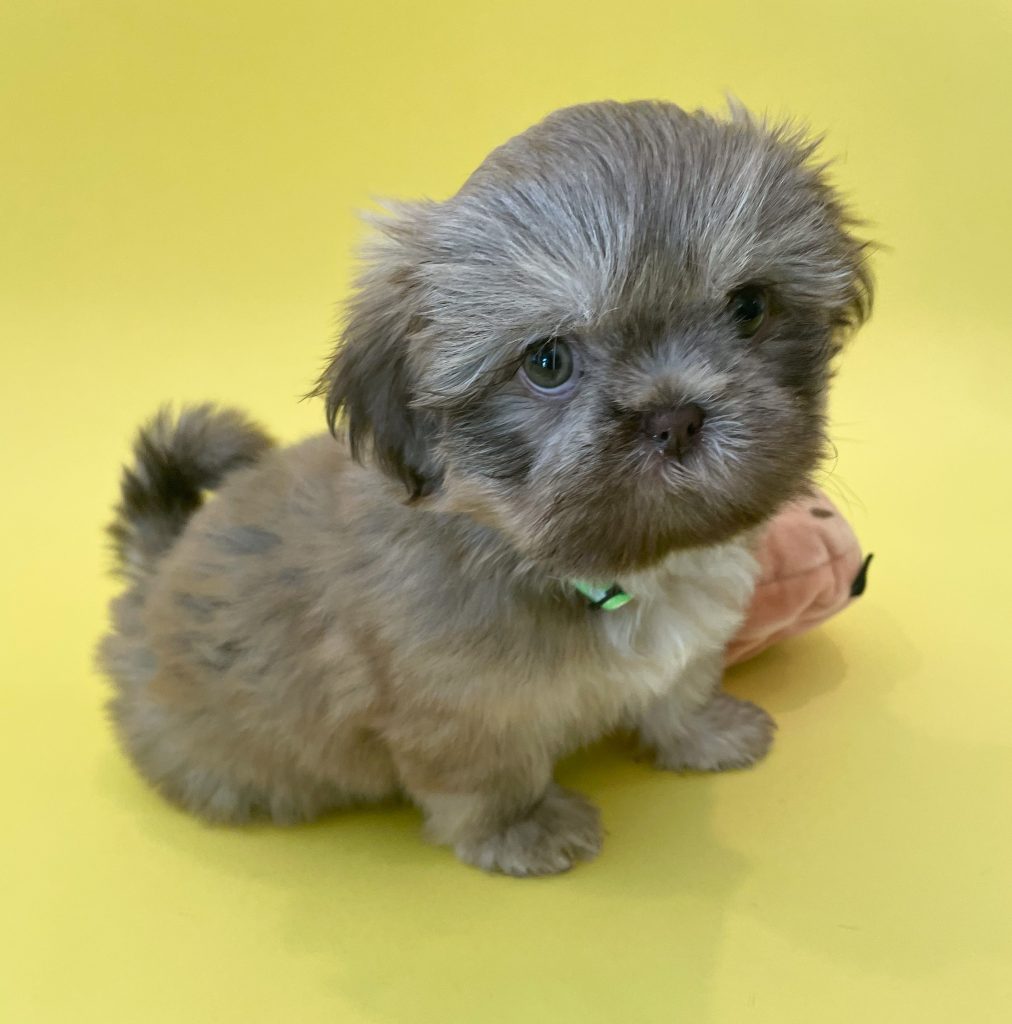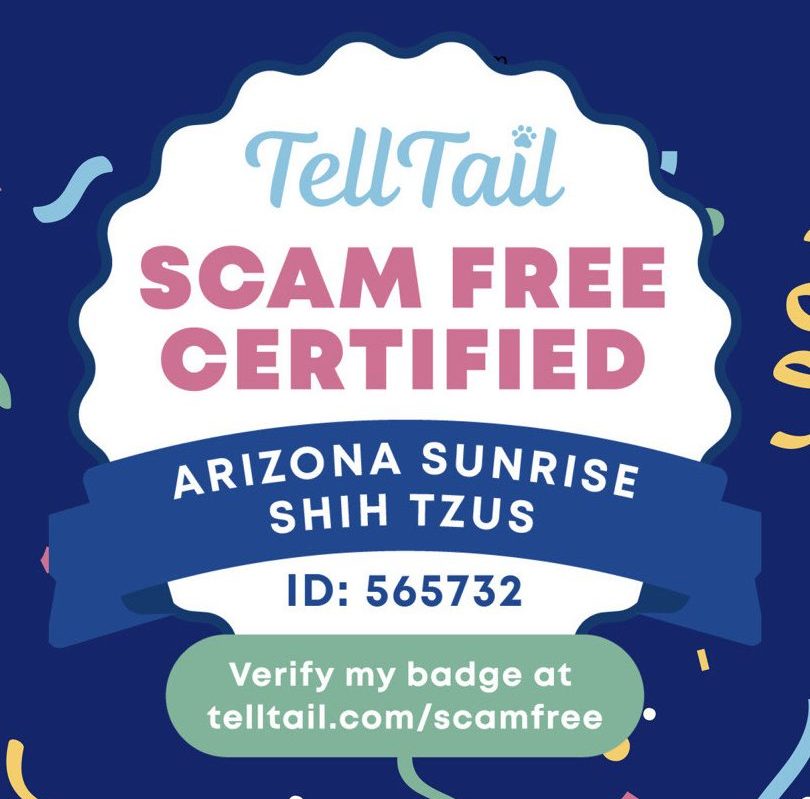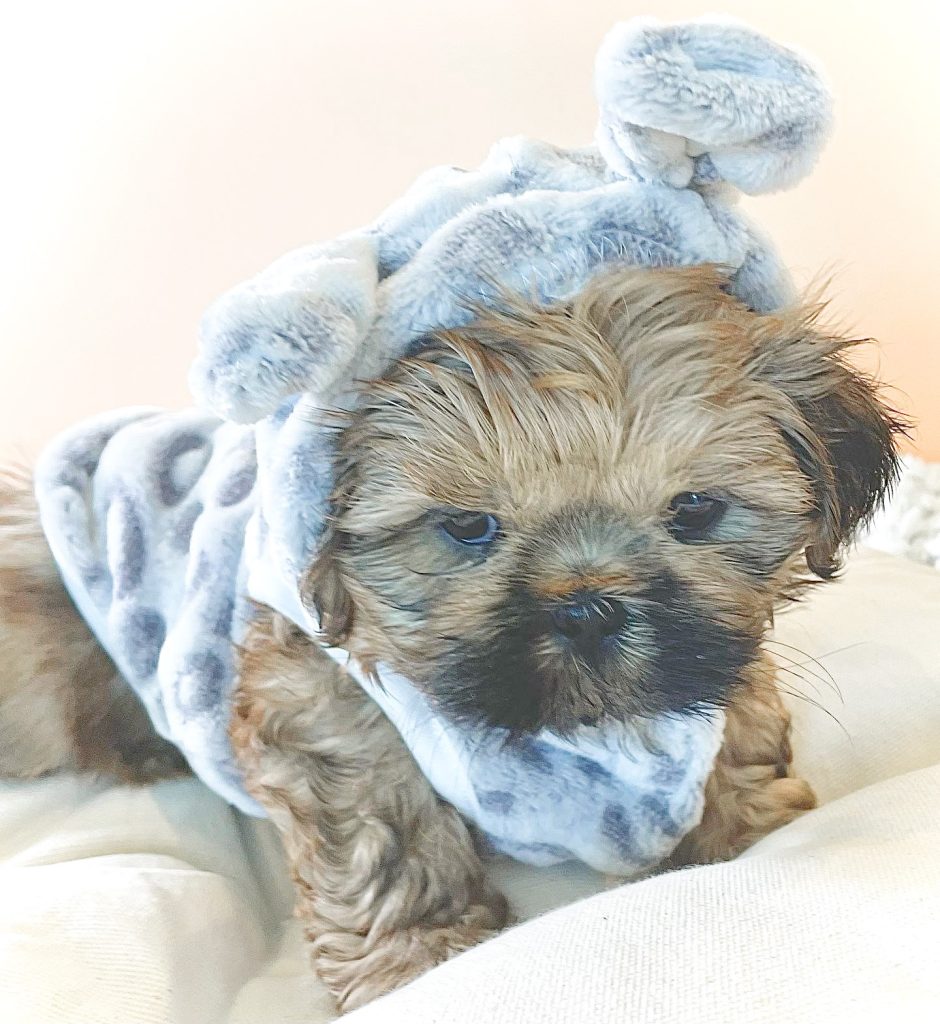
You may be wondering what is the ideal age for a Shih Tzu puppy to leave mom and littermates. A Shih Tzu puppy should ideally stay with mom and littermates until at least 10 weeks of age. A Shih Tzu puppy learns important skills from mom and siblings during this critical period of development. Mom and littermates teach important skills such as bite inhibition. Shih Tzu puppies that stay with mom and siblings during the critical socialization period have an intellectual and behavioral advantage according to studies.
I consider myself an ethical and responsible Shih Tzu breeder. I like to keep all of the Shih Tzu puppies in my breeding program until they’re at least 10 weeks old. Shih Tzus are a toy breed. A toy breed puppy develops at a slower rate than a large breed puppy. A Shih Tzu puppy needs more time to develop compared to a Golden Retriever for instance. It would be unfair to send a Shih Tzu puppy home at the 8-week mark when he or she isn’t developmentally ready.
Toy-breed puppies can be quite tiny at birth. Most of the Shih Tzu puppies in my responsible breeding program weigh at least 3 pounds by the 10-week mark. Shih Tzu puppies under 3 pounds often have trouble maintaining their blood sugar and may need to stay with the breeder a little bit longer.
As a Shih Tzu breeder, I know the signs of low blood sugar (hypoglycemia) and how to prevent it in the first place. Once Shih Tzu puppies reach the 3-pound mark they’re less likely to suffer from hypoglycemia if they’re being fed on a proper schedule. All my Shih Tzu puppy owners receive a puppy manual that includes a feeding chart.
Furthermore, a Shih Tzu puppy may go through a fear period at around 8 weeks of age. A fear period is a time in a puppy’s development when suddenly things in the environment cause fear. An educated Shih Tzu breeder knows to look for signs that a litter of puppies is entering a fear period. In my Shih Tzu breeding program, all curriculum and training is mellowed down until the fear period passes. If a Shih Tzu puppy is sent home during a fear period, anxiety may be present throughout life. Anxiety can be avoided if a Shih Tzu breeder knows how to care for a litter going through a fear period.
As a responsible Shih Tzu Breeder, I strive to create confidence in the Shih Tzu puppies that I raise. It would be easier to send puppies home at 8 weeks but it isn’t in the best interest of the puppies. I raise all of the Shih Tzu puppies in my responsible breeding program on a developmentally appropriate curriculum. Keeping the Shih Tzu Puppies until they’re at least 10 weeks old allows me to work the puppies through the curriculum according to their developmental benchmarks. The result is brave puppies that have all the tools they need to succeed in their new homes.
To sum things up, Shih Tzu puppies that are separated from mom and littermates early may display developmental and behavioral problems throughout life. Puppies sent home early may also lack basic confidence. Furthermore, puppies sent home too soon may miss out on important learning opportunities and may be more fearful as adults. Puppies should be sent home when developmentally ready to create well-rounded puppies. Puppies can learn a great deal during the additional time spent with their breeder.

